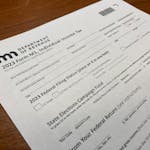Xcel Energy wants Minnesotans to pay more for power.
The utility's rates would climb 15.2% over three years under a plan submitted to state regulators Friday, raising $466 million for a host of projects, from strengthening its electricity grid to bolstering its nuclear plants and opening new wind farms.
The plan from Minneapolis-based Xcel, Minnesota's largest power provider with about 1.3 million customers, would leave residential consumers paying an estimated $110 more per year for electricity by 2022 — a 10.6% increase. The biggest impact would come in 2020, the plan's first year.
Xcel's proposed hike "is more than I expected," said Annie Levenson-Falk, executive director of the Citizens Utility Board of Minnesota, an advocacy group for residential ratepayers. Still, she said it's "pretty early to make a blanket judgment."
Big rate cases often take regulators 18 months or longer to resolve, and utilities often receive less than their request. Xcel has asked the Minnesota Public Utilities Commission (PUC) for an interim rate increase of 4.1% for all customer classes — residential, commercial and industrial — that would take effect Jan. 1. Such interim increase requests are common, and the PUC usually grants them.
If the PUC eventually grants a rate hike that is lower than the interim increase, customers should get refunds.
Also Friday, the state's second-largest electric utility, Minnesota Power, asked state regulators for a 10.5% rate increase that would raise its average residential bill by more than $11 a month. Minnesota Power, with 145,000 customers, is asking for $65.9 million to cover increased costs and "significant lost sales" among some industrial and wholesale customers.
Given the PUC's crowded docket, Xcel is separately proposing that regulators extend components of its current rate plan through 2020. The company would then file its rate case next year. "We are putting that alternative out there for the commission to consider," said Christopher Clark, Xcel's president for Minnesota and the Dakotas.
With Xcel's proposed hike, the company said that its average monthly residential bill in Minnesota — now $85.66 — would rise by $4.80 in 2020; another $1.25 in 2021; and $3 more in 2022. Clark said Xcel expects those bills to remain consistently under the U.S. average.
The average residential bill varies and is based not just on the price of power, but also on electric consumption patterns. Xcel's average monthly residential bill in 2018 was $91, according to data from the U.S. Energy Department and the PUC.
The U.S. average monthly residential electric bill last year was about $118, federal data show. Residential electricity consumption is greater on average nationally than in Minnesota, a state known for a high degree of energy conservation and relatively low use of air conditioning.
Xcel's filing Friday with the PUC is its second consecutive multiyear rate plan, an option made possible by a 2015 change in state law that Xcel supported. Xcel's last rate hike was filed in 2015 and approved by the PUC in 2017; it raised residential rates by 10.6% over a four-year period.
Xcel has been granted rate hikes for much of the past decade.
Contributing to Xcel's rate plea is an issue facing many utilities: falling electricity sales (by volume) as customers use less power.
"Similar to our last two rate cases, declining sales necessarily mean that we must recover our investment over fewer units of sales," the company said in a PUC filing.
The $466 million in rate revenue that Xcel seeks to raise would flow to a variety of capital investments. Xcel's plan also calls for an increase in its regulated return on equity — a profitability gauge — from 9.2% to 10.2%, which alone would account for $73 million of the $466 million.
"The return Xcel is asking for its shareholders is quite high, and we will definitely be looking at it," Levenson-Falk said.
Xcel's rate plan filed with the PUC includes $72 million for capital improvements to its transmission grid, which delivers high-voltage power over longer distances. Another $75 million would be sunk into the company's distribution network — the lines, poles and other equipment that deliver power to houses and businesses.
Those distribution investments also include a new system to reduce outage times, as well as the first phases of an advanced metering system that Xcel expects to roll out.
Another $63 million would be spent on ongoing investments at Xcel's two nuclear plants, particularly the Prairie Island station near Red Wing, Clark said. As for wind, $80.5 million in costs now flowing through a rider will be rolled into Xcel's rate base, though the company says customers' payments won't change.
Xcel is in the midst of a big transition to renewable energy and away from coal, currently its largest energy source. It plans to close all its coal plants by 2030 and is shooting for 100% clean energy by 2050 — an aggressive goal that may not be technically possible, at least now.
"This [rate plan] we are proposing over the next three years is really recognizing that we are on a clean energy transition," Clark said. Nuclear and wind are the company's primary sources of carbon-free power.
Xcel's new rate case comes as the PUC has just begun wrestling with the company's "integrated resource plan," an important long-term outlook that Minnesota electric utilities must file every few years. Xcel also Friday filed a long-term plan with the PUC for its distribution system.
With those dockets in front of the PUC — plus new rate cases filed this week by Minnesota Power and natural gas provider CenterPoint Energy — Xcel has proposed to effectively extend its current rate plan for one year, Clark said.
Staff writer Brooks Johnson contributed to this report.
Mike Hughlett • 612-673-7003




